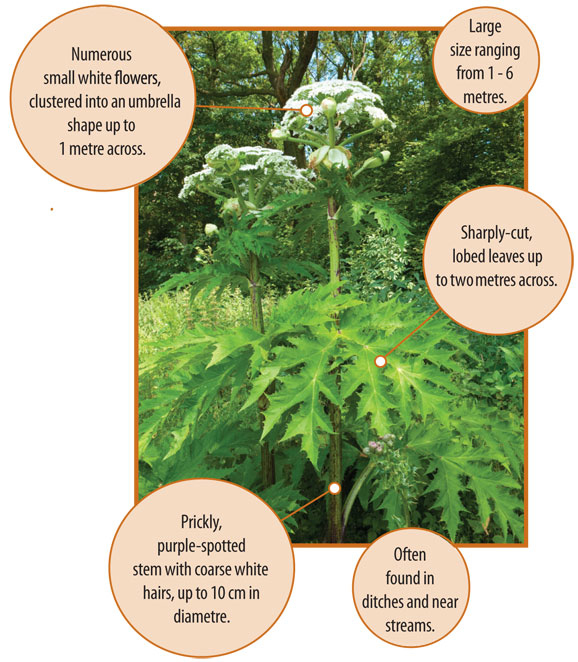

| Topic: Giant Hogweed Can Pose Health Risk | |
| Date Issued: August 4, 2011 | Date Revised: |
New Brunswickers who work outside have expressed concern about giant hogweed, a noxious and potentially dangerous weed that was first discovered in the province in 2010.
Giant hogweed (Heracleum mantegazzianum) is considered an invasive species in North America. Like the name suggests, it can grow quite large, with mature plants reaching up to six metres high. If its sap comes into contact with moist skin and is then exposed to sunlight or UV-rays, it can cause severe phytophotodermatitis (skin inflammation). Initially, the skin turns red and itchy, with large, sunlight-sensitive blisters forming within 48 hours. These blisters can eventually form black or purplish scars that can remain UV-ray sensitive for years. Also, the presence of even a tiny amount of sap in the eyes can burn the cornea and lead to temporary or permanent blindness.
Giant hogweed is often confused with other New Brunswick plant species that bear a similar appearance, including angelica, wild carrot, cow parsnip and hemlock. Giant hogweed can be distinguished by these key features:
